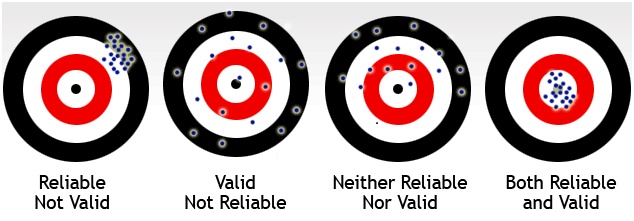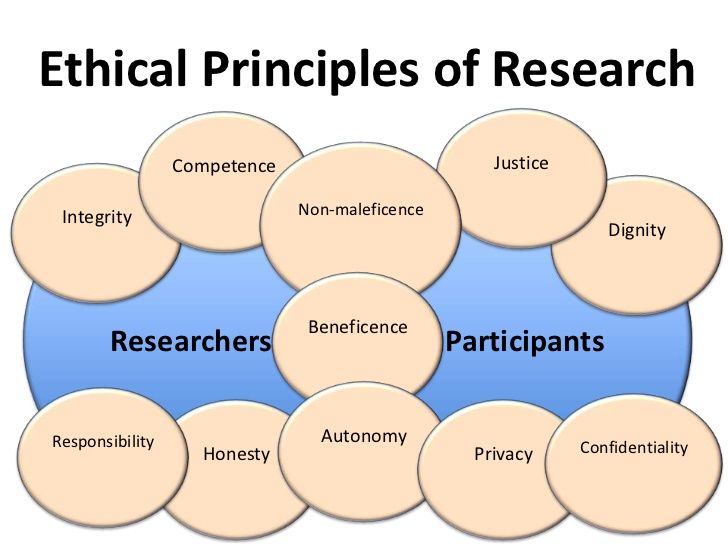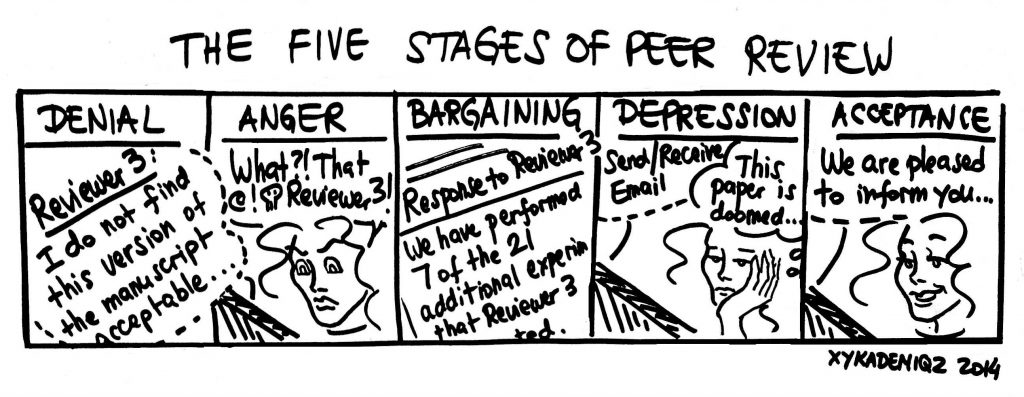If you don’t know it already, you will very soon–the Definition of Terms section in the introductory chapter of your dissertation, that is. As your chair, peers, or friendly dissertation consultants have probably shared with you, this section serves to introduce your readers to key terminology that you’ll use throughout your dissertation or thesis writing in discussing your study’s specific contribution to your academic discipline.
You’ve also probably come across a few Definition of Terms sections in your own research (and especially in preparing for the literature review) and found that they can include everything from specific populations, to key variables (for studies undertaking statistical analysis) or concepts (for qualitative research and analysis), to specific legislation or medical procedures–and beyond.
The best way to think about what to include in your study’s Definition of Terms section is by thinking of it almost as a short glossary or checklist of what your readers absolutely need to know to orient themselves to the specific ideas and language of your topic and field of research. By way of illustration, and since examples in context are often the best form of dissertation assistance, we thought we’d offer up our own Definition of Terms–basically, a short (or not-so-short) list of the main terms and concepts our dissertation consulting clients encounter, and often for the first time, during the research process.
Alignment
For this and many other terms on the list, alignment has a specific meaning within the context of academic research and, especially, dissertation and thesis writing. However! Alignment, in its perhaps most common real-word usage–wheel alignment for automobiles–actually serves as a helpful analogy here. When your wheel alignment is off, your car might pull off to one side, shake, and often your steering wheel won’t actually correspond to how straight your car drives on the road. To fix wheel alignment, you don’t adjust the wheels themselves, but rather the suspension, the system that connects the wheels to the car.
Similarly, with dissertation research, alignment refers to how well you’ve clearly connected the foundational elements of your study. Does your purpose statement, in fact, address the specific issue identified in your problem statement–or does it pull away from the problem to focus on something perhaps only tangentially related? Does your methodology correspond to the problem as you’ve described it? If you’re planning on a quantitative study with statistical analysis, for example, do your variables tie back to the problem and purpose, as well?
The vast majority of doctoral candidates who reach out to us for dissertation consulting often need support with exactly this issue in their studies, and we’ve found that if you think about the dissertation as a system that needs to properly connect all of its key parts, then it often becomes easier to look at the foundations of your study with a fresh perspective.
Research problem
If there’s a word you’re likely to get sick of hearing first from your chair, committee, and yes, even your dissertation coach, we’re betting that word is problem, in all its variations–research problem, problem statement, general and/or local problem, business problem… You get the idea. That being said, as with the rest of the terms on this list, while problem gets used and abused during the dissertation process, it’s because it’s a very important (you might say the most important) element of your overall study.
The research problem is the specific issue in your field that you plan to explore or examine in your dissertation or thesis writing. It’s a “problem” in the sense that you’ve identified an unanswered question (or series of questions!) and other scholars have pointed out that the lack of research on this topic needs to be addressed.
As this might indicate, you can’t figure out your research problem, of course, until you determine the gap in the research that your study will address! So while you might find, first, that there’s a gap in the research on successful strategies for food delivery apps, you might then decide to further focus this gap to look at specific strategies or barriers for success for areas with more urban or suburban sprawl (after confirming this is part of the existing gap). Finding that initial gap is key–so that you can narrow it down to the specific problem that you can address.
Hook and anchor
While this phrase is most directly relevant for DBA candidates studying at Walden University (one of our primary universities for dissertation assistance), the concept of “hook and anchor” is one that offers some important insight when it comes to breaking down your problem statement into a clear and compelling justification for your topic. In fact, those of you with some background in business or management, regardless of your current doctoral program or research focus, may already be familiar with the idea of a “hook” and an “anchor” in a professional setting.
The purpose of a hook and anchor in your problem statement is to establish the larger significance of your proposed research (sometimes also called the general problem or the global problem) before outlining the specific aspect of this issue that you’ll focus on for your dissertation research. The hook, specifically, should introduce the issue and include support from very recent scholarship, to clearly indicate that this issue is current and unaddressed–in other words, it should “hook” your reader and get their attention! At Walden, the hook is specifically talked about in terms of a “WOW statement”, a well-known sales term for getting to the point fast (and making sure your point’s a good one).
Once you’ve established your hook, the purpose of the anchor, then (also well-named) is to ground this initial statement in concrete evidence (if you’re thinking “statistics,” here, you’re right!). It’s important to understand this difference between the hook and anchor, and we can absolutely help you review your progress so far if you’re currently seeking preliminary dissertation help as you finalize your topic and problem statement.
If approached properly, the hook and anchor help you to establish, immediately and clearly, the importance of continued research in your field. However, if you’ve found an appropriate research gap (see above), then this broader introduction is far too much to tackle for one dissertation–so the hook and anchor also set the stage for a more focused discussion of the specific research problem you’ll address through your original quantitative and/or qualitative research.
Social change
Again, this term is particularly critical for doctoral candidates attending Walden University [https://www.waldenu.edu/about/social-change], but even if you’re attending another online or brick and mortar university for your doctoral studies, the concept of social change is useful when you’re thinking and writing about the overall significance of your proposed dissertation research. This is especially true since, more and more, academic research is evaluated on the merits of its contribution to society at large.
Put simply, “social change refers to the transformation of culture, behavior, social institutions, and social structure over time”. In the context of dissertation or thesis writing, then, understanding your study’s contribution to social change involves asking yourself, “why does this matter?” The next step is looking to the literature in your field to see why the research gap you plan to address is an important one in a broader societal context (as we discussed above, just because there’s a gap in the research, doesn’t mean that gap needs to be filled).
Don’t be daunted by this idea if your study focuses on a very specialized (or not traditionally “academic”) topic! After all, even food can be a tool for social change, according to “social gastronomist” David Hertz (and we’d love to help you with your dissertation as you determine your study’s contribution):
We can use food to create a more inclusive society. Food touches on every aspect of human life: the environment, agriculture, our economy, health, even our social lives. Social gastronomy “uses food to turn social inequalities — such as hunger, poor nutrition, unemployment, inequality — into dignity, opportunities and well-being,” says Hertz.
Anthropomorphism
Even seasoned academic writers often find themselves taken to task for anthropomorphism, so if you’re finding comments pointing this out as an issue to address in your dissertation editing, you’re in good company! And as with many of the terms on this list, it’s important to keep in mind the dissertation as your specific context for anthropomorphism. After all, in other contexts, this concept–the tendency of humans to attribute human qualities to animals or inanimate objects–is actually helping us learn exciting new things about the world around us.
Take Inky the Octopus, for example, whose escape from a New Zealand aquarium into the Pacific Ocean highlighted the ways in which animals’ complex intelligence and abilities are often minimized in order to emphasize their difference from people. Viewing animal and human intelligence on a continuum could, in fact, ultimately allow us to understand more about both.
However, in the context of editing your dissertation, anthropomorphism is a bit more cut-and-dry. In less formal (or more literary speech), you can easily find instances in which speakers refer to the ways in which a study “suggests” or “claims” or even “finds” some important knowledge that you, as a researcher, are excited to incorporate into your own discussion. However, technically, research itself cannot suggest or claim anything–those are human qualities.
That being said, if you’re desperate to change up your sentences (so it’s not just X and Y found that Z, over and over), you can (following APA editing guidelines for anthropomorphism) write that studies “show” or “indicate.” But that’s it! So use sparingly.
Reliability
Generally speaking, in scientific research, reliability is “the probability that the device or the system will adequately perform the specified function for a well-defined time interval in specified environmental conditions”. In your case, as a doctoral researcher, the reliability you’re tasked to demonstrate relates specifically to your data collection instrument.
Some researchers (even on the doctoral level) choose to develop their own quantitative data collection instrument–however, this is quite a complex project, to the point that developing and testing a new survey or other instrument can itself be the focus of a dissertation. For these doctoral candidates, pilot testing and preliminary statistical analysis must be completed to ensure that answers to the survey questions consistently provide similar results (usually by testing and then re-testing the same group of participants).
The vast majority of clients who come to us for dissertation assistance choose the less time-consuming option of working with a pre-validated survey instrument that has already been through rigorous pilot testing, and so reliability can be proven by citing those published results. In other cases, you might be able to work with secondary or archival datasets to complete your statistical analysis and test your hypotheses. In this case, you would, again, simply refer to the evidence of reliability for that data. For both of these options, another statistician has already completed the detailed (and often tedious) additional steps of ensuring statistical reliability for your selected instrument or data.
Validity
is closely tied to reliability and refers to “how well a test measures what it is purported to measure.” https://chfasoa.uni.edu/reliabilityandvalidity.htm As with reliability, most of our dissertation consulting clients (and doctoral candidates overall) typically choose to work with a pre-validated instrument, leaving the heavy lifting to determine validity to more established researchers and statisticians.For those who are considering developing their own quantitative instrument, however, there are a number of options for determining that an instrument accomplishes the purpose of your study (pilot testing, again, is critical here). These range from evaluating the content development of the instrument (using experts to develop survey questions, for example) to a cross-comparison with existing instruments that should provide similar results. Again–additional literature searches, outreach to experts, and statistical analysis are often required here, so especially for those already planning to employ statistical> [link to quant methods page] or other dissertation assistance for your study, try to find an existing instrument first! (And if you still have questions or need further statistics consulting, [link url="contact.shtml"]we’re happy to help)!
Belmont Report
You’re bound to come across the Belmont Report at some stage in your doctoral journey–for most doctoral candidates, this report becomes important while drafting the methodology chapter and preparing for Institutional Review Board (IRB) review and approval. Published in 1979, the Belmont Report is an exhaustive discussion of ethical guidelines to follow when conducting research using human subjects. Most relevant to doctoral researchers are the report’s guidelines for assessing and minimizing risk to participants, identifying and recruiting research participants, and ensuring informed consent.
While the necessary steps to ensure adherence to the guidelines and principles of the Belmont Report can often feel like just another task to complete before beginning the most exciting part of your study–the actual research!–it’s very important to ensure that you clearly and carefully plan your process for selecting participants, recruitment, and informed consent. In fact, as many doctoral candidates who reach out for help with their dissertations while completing their IRB applications find, there is a direct benefit for you (beyond ensuring the safe and voluntary participation of your study subjects). The better you plan your recruitment and data collection process, the easier it will be to carry out when the time comes!
Luckily, you can access the entire Belmont Report in its entirety online, so this information is readily available to you as you finalize your research design and begin to think about carrying out your proposed quantitative or qualitative research and analysis. And if you’re wondering at all where to begin, be sure to check out our data collection checklist or contact us for more information about our specialized approach to this phase of dissertation assistance!
Peer-reviewed articles
For many novice researchers, the literature review is often the most daunting part of the dissertation or thesis writing process. In fact, it’s one of the main areas that doctoral candidates reach out to us about when they ask about dissertation consulting or dissertation coach services. Over the past 12 years, we’ve found that the primary stumbling block for many graduate-level researchers is finding appropriately scholarly (i.e., peer-reviewed) research to include in the literature review. (We’ve actually devoted a separate blog post to this topic – so if this is an issue for you, and you’re currently considering dissertation assistance, definitely check that out.)
What does “peer reviewed” mean in this context? Luckily, there’s nothing complex about the name. Peer-reviewed research is research that, once completed, is then subjected to an extensive critique by scholars in the field. Journals that follow a peer review process are generally viewed as more credible and trustworthy, because the methods and findings of the researchers they publish have held up under scrutiny by established experts in the field. Perhaps you’ve already begun thinking about how to turn your completed dissertation research into a published article in your “dream journal”–it’s an exciting next step once you’ve completed your doctoral degree, and one we can assist with as a next or final step for many of our dissertation consulting clients.
In terms of determining whether a journal article is peer-reviewed, most major databases (like ProQuest) offer you the option of searching only for this type of publication. Of course the next step is to ensure that the article (not an opinion piece or letter to the editor) is in fact peer-reviewed, and a quick way to verify this is to check out the journal’s homepage. If the editors submit their articles to peer review, they won’t be shy about letting you know!
Of course, once you’ve mastered the search process to include only peer-reviewed and scholarly sources, you then need to refine your newly honed skills further–to ensure that you’re reviewing and including only the most recent, relevant sources (to support the need for your study right now, today). This can definitely be tricky, particularly if you’re further along in drafting your literature review, but we can absolutely help you with your dissertation so that you keep moving forward!
Did we miss anything? Let us know the essential terminology you’ve learned during your dissertation or thesis writing process in comments!
References
- California Polytechnic State University. (2017). Find peer-reviewed articles. Retrieved from https://lib.calpoly.edu/support/how-to/find-articles
- D’Arcy, Patrick. (2018, July 12). How food–yes, food–can be a tool for social change. TED Talks: IDEAS.TED.COM. Retrieved from https://ideas.ted.com/how-food-yes-food-can-be-a-tool-for-social-change/
- Kaufmann Entrepreneurs. (2016, July 28). Powerful presentations: Crafting your WOW statement. Retrieved from https://www.entrepreneurship.org/videos/powerful-presentations/crafting-your-wow-statement
- Lazzaroni, M., Peretto, P., Rinaldi, P., & Catelani, M. (2011). The Concept of “Statistical” Reliability. In Reliability Engineering (chapter 2). Retrieved from https://link.springer.com/chapter/10.1007/978-3-642-20983-3_2
- National Commission for the Protection of Human Subjects of Biomedical and Behavioral Research. (1979). The Belmont report: Ethical principles and guidelines for the protection of human subjects of research. Washington, DC: U.S. Government Printing Office.
- Phelan, C., & Wren, J. (2006). Exploring reliability in academic assessment. Retrieved from https://chfasoa.uni.edu/reliabilityandvalidity.htm
- Riederer, R. (2016, April 26). Inky the Octopus and the upsides of anthropomorphism. The New Yorker. Retrieved from https://www.newyorker.com/culture/culture-desk/inky-the-octopus-and-the-upsides-of-anthropomorphism
- University of Minnesota Libraries Publishing. (2010). Understanding social change. In Sociology: Understanding and Changing the Social World (chapter 20.1). Retrieved from http://open.lib.umn.edu/sociology/chapter/20-1-understanding-social-change/
- Walden University. (2018). Social change. Retrieved from https://www.waldenu.edu/about/social-change







